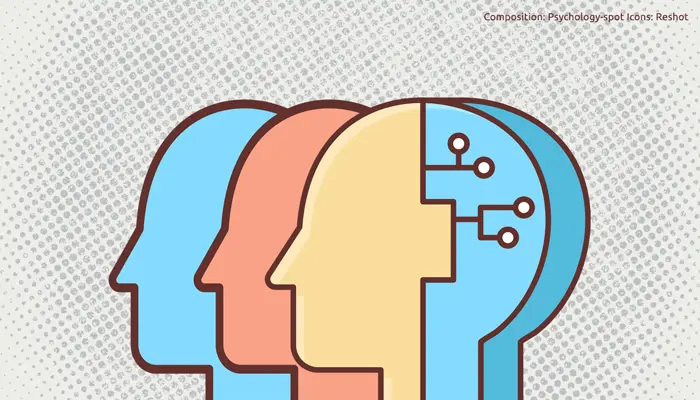
Problem solving is a complex psychological process through which we try to find the best way to overcome an obstacle or face a challenge. Unfortunately, this process is not always linear, but can follow tortuous paths, plunging us into a situation of psychological anguish when we believe that there is no possible solution.
On the other hand, knowing the phases of problem solving will save us a lot of headaches. Providing a coherent structure to the situation that concerns us, and having a common thread that guides us along the way, will help us to put some order in the mental chaos that problems usually generate.
To Solve a Problem, Experience Does not Always Work in Our Favor
Experience can be a plus or, on the contrary, become an impediment to solving problems. Psychologists from the universities of Hong Kong and Princeton examined how we implement problem-solving strategies by asking a group of people to solve a series of problems with matches.
Participants were presented with a series of linked squares. Each square in the matrix was made up of separate pieces, and people had to remove a certain number of matches while keeping a specified number of squares intact. The interesting thing about these types of problems is that they generally have more than one solution, different strategies can be used and these must change according to the configuration of the matrix, just as it usually happens with life problems.
These researchers found that participants went through two major stages in problem solving. At first they let themselves be carried away by the perceptual characteristics of the problem and began to explore different strategies, some successful and others not.
In a second moment they used the accumulated experience to narrow their options of strategies, focusing on those that were more successful. The problem is that the more the participants trusted their strategic knowledge, the more difficulties they had in solving problems that demanded the application of novel strategies. In practice, they suffered from a kind of functional fixation.
These series of experiments show us that to solve a problem we must keep an open mind because along the way circumstances are likely to change and we need the mental flexibility necessary to change our problem-solving strategies.
The Stages of Problem Solving We Can All Apply
1. Identify the problem
It may seem like a truism, but the truth is that identifying the real problem is not as easy as it seems, especially when it comes to a situation that affects us emotionally. In fact, when the problem is too scary or we sense that we do not have the psychological tools to solve it, we usually put into practice defense mechanisms such as displacement that allow us to erase the problematic situation from our conscious mind.
Instead, being able to identify the problem is the first step in finding a solution. Many times that means stopping looking outside for the culprits and searching within, wondering why a situation is particularly bothering or hindering us.
2. Understand the problem
Many times the problem brings with it the seed of the solution. So one of the steps in solving a problem is making sure we understand it. It is not enough to identify the problem, we need to define it. For this we need to analyze it from different perspectives.
For example, if we are trying to carry out a professional project that does not finish taking off, we have to clarify the reasons. Do we need more training? Are we in an overly competitive sector? Do we have enough resources? We need to understand the source of the problem.
Organizing the information available is another crucial step in the problem-solving process. We have to ask ourselves both, what we know about the problem and everything we do not know. Ultimately, the accuracy of the solution will largely depend on the amount of information available.
3. Assume a psychological distance
Most of the major problems in life have the potential to generate an emotional tsunami. However, many times that affective involvement obfuscates and prevents us from thinking clearly. That is why on many occasions one of the most important but least known phases for solving problems consists of moving away from what concerns us. To assume a psychological distance, we can take a few days away from the problematic environment or try to stop thinking about what worries us for a while.
During that time the unconscious mind will continue to work and is likely to generate creative and perfectly valid insights that lead to the solution of the problem. That distance to allow us to overcome the functional fixations that prevent us from thinking outside the box, giving way to a mental restructuring that will allow us to see the problem from another perspective.
4. Find solutions and develop strategies
Each problem is different, so it will require a specific solution. A solution cannot always be reached by insight, so it will be necessary to think of possible alternatives to solve the problem. Synectics, for example, is a problem-solving method that uses creativity to find original solutions.
The next step is to develop a strategy, since solutions that do not materialize in concrete steps are very difficult to implement. Therefore, we must ask ourselves how we are going to implement our solution. In this phase of problem solving it is important to be honest with ourselves and “land” that strategy taking into account our resources and real availability. It is useless to develop a great strategy if we cannot apply it later.
5. Evaluation of progress
Very few problems are solved overnight. These are generally complex situations that we must patiently “unwind” over time. Therefore, another of the phases to solve a problem consists of monitoring the results that we are achieving. This way we make sure that we are on the right track and we are not wasting energy and time uselessly.
In this last stage of problem solving it is important to be able to adapt our expectations. It is difficult for a professional project to take off in the blink of an eye, so we must focus on the small steps that indicate that the solution is paying off. To do this, it is important to sit down and reflect on the impact of the solution from time to time.
We must also bear in mind that circumstances often change, so we may need to make adjustments to our initial solution. This requires great mental flexibility to change course when we realize that the strategy is not as effective as we would like.
Sources:
Fedor, A. et. Al. (2015) Problem solving stages in the five square problem. Front. Psychol; 6: 1050.
Louis Lee, N. Y. & Johnson-Laird, P. N. (2013) Strategic changes in problem solving. Journal of Cognitive Psychology; 25: 165–173.
Gillen, G. (2009) Managing Executive Function Impairments to Optimize Function. Cognitive and Perceptual Rehabilitation; 245-283.



